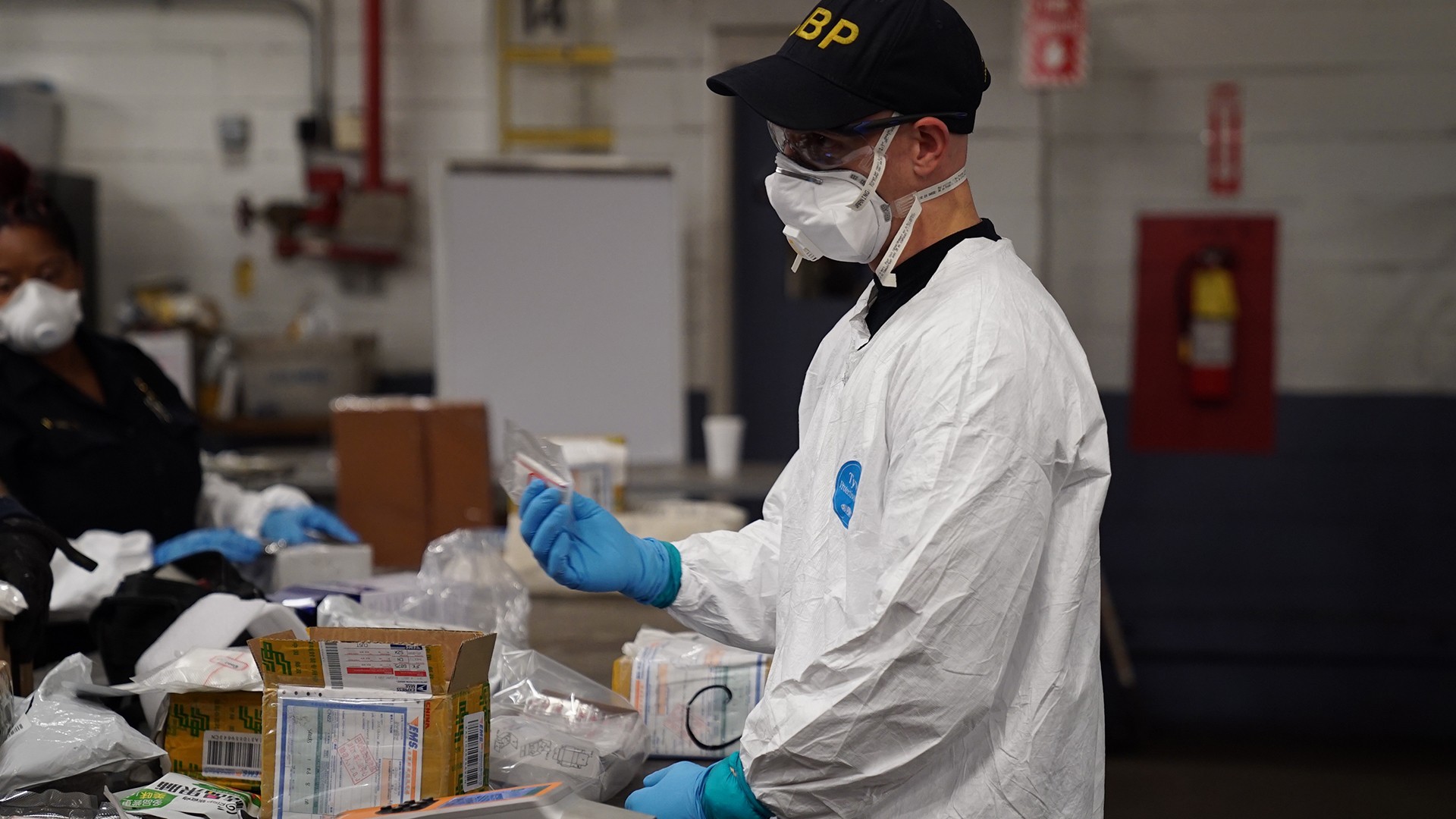(Photo by Salwan Georges/The Washington Post via Getty Images)
Last week, the Centers for Disease Control (CDC) released the latest annual statistics on America’s overdose crisis, and once again, they were staggering. In 2016, 42,249 people died from opioid-containing overdoses, a 28 percent increase from a year earlier. Illegally-manufactured fentanyl and its derivatives—a.k.a. fentanyls—were the the number one cause of opioid-related deaths, accounting for almost half of these fatalities. That suggests today’s epidemic is dominated by street drug poisoning, not the diversion of pain medication, as some in the Trump administration (and many holdout drug warriors) might have you believe.But while I’ve written ad nauseam about measures we already know need to be implemented to save lives, researchers are increasingly concerned about the many unknowns looming over the overdose nightmare. In fact, a recent meeting held by the Drug Policy Alliance’s Office of Academic Engagement in Washington, DC focused on the gaps in the literature, and what scientists would study were they not faced with financial or other limits (disclosure: I was a participant).The lack of information out there on fentanyls alone was shocking.

Among other things, a key mystery lingering over this saga is why potent fentanyls are turning up in some batches of stimulant drugs like cocaine, methamphetamine and even, perhaps most terrifyingly, counterfeit Adderall. In order to curb the spiraling death toll, Americans need to understand much more about what fentanyls are, why they're spreading, and why people take them.A 26-year-old medical student recently committed suicide after facing criminal charges in the death of his girlfriend. He’d given her a pill he bought online—only, he said, after she pleaded with him for some of what he believed was the study drug. Despite a lack of clear intent, the man was charged with causing her death before taking his own life.But why would someone sell a drug that often puts the customer to sleep as a wake-up pill in the first place? “That’s an entirely different experience,” noted Ojmarrh Mitchell, associate professor of criminology at the University of South Florida, adding that selling customers the opposite of what they want is bizarre as a business proposition—yes, even the drug business tends to follow market logic—not to mention potentially deadly.Law enforcement officials have speculated that dealers might be attempting to make the drugs seem more potent. But that’s another dumb business plan, because if you don’t know what you’re taking, you don’t know how to buy more of it. “Maybe people go back to the same dealer because they end up liking it?” suggested Alex Kral, director of the Urban Health Program at RTI International, a nonprofit research organization. But he conceded this hypothesis seems unlikely because users are rarely faithful to a single dealer.Of course, the biggest problem with dealers marketing fentanyl as anything other than an opioid is that this makes an already-risky substance even more deadly. Heroin users at least have some tolerance to opioids, which reduces their odds of overdose, but those who have never taken such drugs face even greater peril. And customer deaths tend to heighten legal scrutiny—another reason even sociopathic dealers might prefer to avoid poisoning people.So, why sell these mixtures at all? Jon Zibbell, who works with Kral at RTI as a senior public health scientist and frequently interviews opioid users, told me that although many people might like to mix coke or meth or heroin in a single shot, users almost always prefer to do the mixing on their own—the market for pre-mixed "speedballs" has never been a major one. (My own experience as a former Speedballer is congruent with this: The key is timing, and if you don't control the mix, you can't control the timing.) For this reason, he suspects most seizures of mixed street drugs involve cross-contamination, not deliberate mixing. That raises even more questions, of course, namely where in the supply chain the problem occurs.Zibbell noted that the DEA has at least once found methamphetamine and fentanyl being shipped across the Mexican border in the same vehicle. However, based on his work with people who take drugs, he suspects most of the mixing is happening far closer to the street, either by accident or by young dealers who might be trying to find their way in the market.Terrifyingly, these are far from the only critical unanswered questions about fentanyls. It’s virtually certain that some high-level suppliers and dealers have historically cut the drug more precisely than others. How this cutting is done, however, is not known, even though this information could potentially save lives.Also, experts don’t even know for sure whether heroin users actually prefer fentanyl and its derivatives or whether these drugs have become so common simply because they’re cheaper to manufacture and easier to transport than heroin. My own interviews with users over the years, however—and those of researchers like Zibbell—suggest the rapid rise of fentanyls in heroin markets has not been driven by demand.After all, fentanyl users often lose consciousness immediately, which means they don’t even experience a high. Also, fentanyls typically last a half hour to an hour—compared to heroin’s five hours or so—producing uncomfortable withdrawal symptoms much more rapidly. Finally, street fentanyls are clearly far more deadly than heroin—this matters because most heroin users are not actively seeking death.Even so, Zibbell’s research does suggest there is a small group of people who do deliberately seek fentanyls. When he studied the use of test strips to detect these drugs, most users did not want to find the test positive—but a few were pleased because they liked the intensity of the rush.While this group appeared to be a minority, more than that is not known—and answers, here, too, have important public health implications. To start, it’s easier to reduce harm by providing alternatives if you know what users actually want. Also, because the high from fentanyls is so short-lived, users may be inclined to inject them far more frequently than heroin, which means greater danger of getting or spreading diseases like HIV and hepatitis. That, in turn, suggests greater use of these drugs is likely to mean more bloodborne disease.Finally, another major gap in our knowledge about drugs involves a lack of research about the pleasure drugs like fentanyls can produce. While this might seem like trivial stuff, it’s hard to help change behavior if you don’t know exactly why people engage in it, and the spectrum of function and dysfunction at play.“The biggest obstacle to better drug policy is recognizing that the vast majority of people who use psychoactive drugs are self-regulating, controlled users—over 90 percent of users of all drugs,” said Ingrid Walker, author of High: Drugs, Desire, and a Nation of Users, and an associate professor at the University of Washington.As Jules Netherland, director of the Office of Academic Engagement at the Drug Policy Alliance, who organized the research meeting, pointed out, “[When] we don’t look at motivations for use, including pleasure, it also means we don’t learn from them why some people can quit on their own and why some can moderate.” For instance, research shows that despair and hopelessness increase addiction risk—while having other sources of meaning and joy seems critical both to addiction prevention and to recovery when addiction does occur. Nonetheless, most drugs research focuses on stopping the drugs, rather than providing healthier alternatives.Pleasure also should be studied for neuroscientific reasons: drugs work by activating brain areas that evolved to make sex and food enjoyable. But while a great deal of research has been done on how these areas behave during addiction, relatively little is known about how they work when people fall in love or have orgasms. Government funders might be queasy about funding scientists to scan people having sex in fMRI machines. But if you don’t know how a system works when it performs its natural activities, it’s difficult to see what's changed when everything goes sideways.Follow Maia Szalavitz on Twitter.
Advertisement

Among other things, a key mystery lingering over this saga is why potent fentanyls are turning up in some batches of stimulant drugs like cocaine, methamphetamine and even, perhaps most terrifyingly, counterfeit Adderall. In order to curb the spiraling death toll, Americans need to understand much more about what fentanyls are, why they're spreading, and why people take them.A 26-year-old medical student recently committed suicide after facing criminal charges in the death of his girlfriend. He’d given her a pill he bought online—only, he said, after she pleaded with him for some of what he believed was the study drug. Despite a lack of clear intent, the man was charged with causing her death before taking his own life.But why would someone sell a drug that often puts the customer to sleep as a wake-up pill in the first place? “That’s an entirely different experience,” noted Ojmarrh Mitchell, associate professor of criminology at the University of South Florida, adding that selling customers the opposite of what they want is bizarre as a business proposition—yes, even the drug business tends to follow market logic—not to mention potentially deadly.
Advertisement
Advertisement
Advertisement
